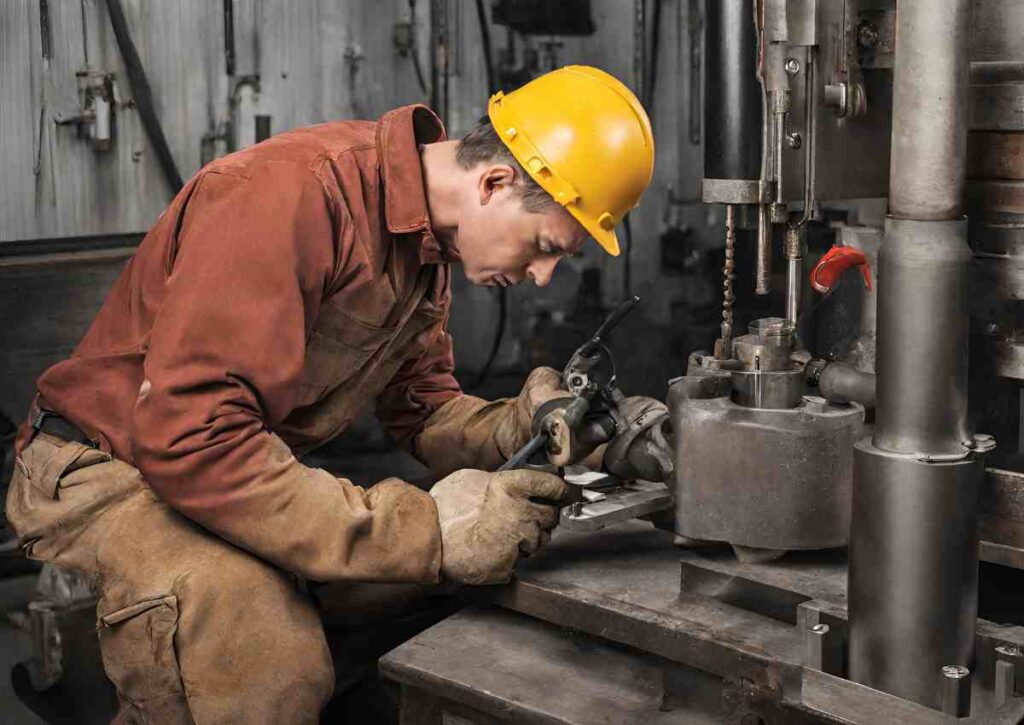Hey there! Welcome to the intriguing realm of precision machining. Today, we’re diving deep into the world of machinery and taking a closer look at two essential techniques: boring and drilling.
Have you ever stopped to wonder about the unique distinctions between these two methods? Well, let’s embark on this journey together to unravel the mysteries behind them.
Boring refines existing holes, making them smoother or larger, while drilling creates new holes in materials.
In this blog about Boring vs Drilling, I’ve unraveled the distinctions: drilling creates new holes, while boring refines existing ones for precision.
What is drilling?
Imagine using a rotating tool like a drill bit to make holes in something, like metal or wood. That’s drilling! It’s about creating holes in materials by spinning a tool against them.

What is boring?
Now, boring is different. It’s not about making new holes; it’s about refining or enlarging existing holes to make them smoother, larger, or more precise.
It’s like fine-tuning something that’s already there.
What Is Reaming?
When you want to make those holes even more precise or smooth, you use reaming.
It’s a process where a tool called a reamer is used to perfect the size and surface finish of existing holes, making them super accurate and polished.
Related Post: Black Oxide Vs. Titanium Drill Bits | Key Differences
Understanding Boring VS Drilling

Drilling: Creating Holes
Drilling is like using a spinning tool to bore holes in materials such as metal or wood. It’s the initial step, creating the foundation by forming holes of various sizes.
Reaming: Refining To Precision
Reaming comes next, refining those holes to exact dimensions and a smoother finish.
A specialised tool, called a reamer, is used to fine-tune the holes, ensuring they meet precise requirements.
Boring: Perfecting Existing Holes
Boring steps in when existing holes need adjustments or enlargement.
It’s not about making new holes but refining or enlarging existing ones for specific purposes, ensuring they’re perfectly aligned or sized.
Tapping: Adding Threads
Tapping is a process where threads are added into those holes, allowing them to accommodate screws or bolts.
It’s like giving the hole additional functionality by enabling it to hold fasteners securely.
Each of these steps is like a unique piece of a puzzle. When combined, they form the complete picture, allowing for the creation of complex structures or machinery with precision.
In the field of precision machining, comprehending these techniques is critical. Different tools cater to different needs, each playing a crucial role in achieving precise results.
For instance, at [Manufacturing Company], they specialise in diverse precision techniques.
From utilising high-speed steel to employing advanced machining centres, they possess the tools and capabilities necessary for various tasks, be it drilling, deep hole drilling, or boring.
This versatility enables them to meet distinct manufacturing requirements with precision and efficiency.
The Main Purpose of Boring Compared to Drilling
Drilling is like the first sketch, creating holes to kickstart a project. However, when precision is crucial, boring takes the stage.
It’s a heartwarming process that refines those holes to meet exact specifications. It’s all about precision and accuracy, ensuring a perfect fit or a smoother surface.
Distinguishing Drilling, Boring, Reaming, and Tapping

Drilling creates holes, reaming refines them to precise dimensions, boring perfects existing holes, and tapping adds threads into those holes.
Each step has its role, like pieces in a puzzle coming together to create the final picture.
In the world of precision machining, understanding these techniques is vital. Different tools, different goals, yet all essential in their own way.
At [Manufacturing Company], they specialise in various precision techniques.
From using high-speed steel to machining centres, they have the tools and capabilities to cater to different needs, whether it’s drilling, deep hole drilling, or boring.
Related Post: Milling Machine VS Drill Press: A Comprehensive Guide
Conclusion
So, there you have it! Drilling, deep-hole drilling, and boring might seem similar, but each has its own unique purpose in the world of precision machining.
Understanding these techniques is key to unlocking a world of possibilities in manufacturing.
The next time you come across a hole in a piece of metal, remember the precision and skill behind it.
It’s not just a hole; it’s the result of precision techniques ensuring everything fits perfectly. Stay curious and keep exploring the fascinating world of precision machining!
Visit Our Site: Drills Boss
FAQs
What is the difference between boring and drilling?
Boring refines existing holes, while drilling creates new ones in materials like metal or wood.
What is the difference between drilling, boring, reaping, and tapping?
Drilling makes holes, boring refines them, reaming perfects dimensions, and tapping adds threads.
What is the difference between a drill hole and a bore hole?
A drill hole is a new hole, while a bore hole refines or enlarges an existing one.
What’s the Main Purpose of Boring vs. Drilling
Drilling starts holes for projects, while boring precisely refines existing holes for accuracy and fit.









